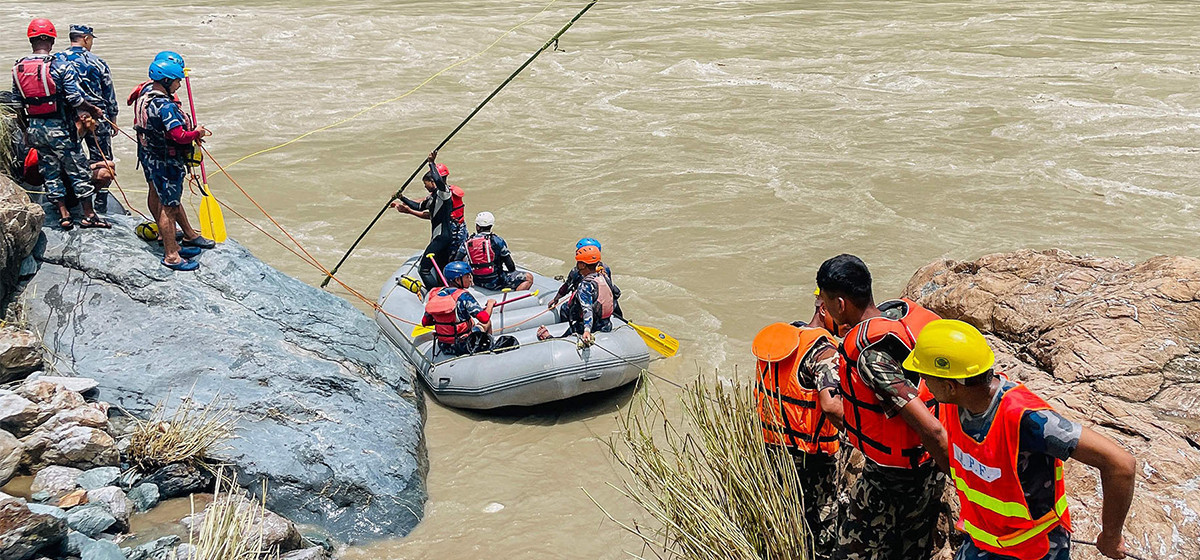
OR
Highest plants on Earth discovered near Nepal glacier
Published On: September 18, 2018 05:30 AM NPT By: Jade Payne
High above the sub-tropical forests and lush grasslands of Nepal, nestled between the scree and moraine from the glaciers of Mount Everest, plants are found braving the elements and surviving in some of the harshest conditions on the planet. Rarely studied, these plants are key to solving the mysteries of plant growth at the world's highest elevations.
For over 60 years, three plant specimens collected near a glacier during a 1952 Everest expedition sat unstudied at the Conservatory and Botanical Garden of the City of Geneva in Switzerland. Research published last month in the journal Alpine Botany has unearthed these three specimens and details their identification as “novel taxa,” or new species.
The Swiss-led expedition that collected the specimens was one of two historical attempts to summit Mt. Everest and bring back plant samples. Its counterpart, a British-led expedition in 1935, collected two other high-altitude specimens. Together, at an elevation of well over 6,000 meters above sea level, these five specimens make up a collection of the highest vascular plants on Earth. No plants have ever been collected and identified at a higher elevation, the study notes.
According to the article, this taxonomic investigation contributes to our “knowledge of the biogeography of Himalayan flora and opens the way for future field-based investigations of mechanisms limiting plant growth on the roof of the world.”
During the time of the original collection, mountaineering was crucial to botanists in their quest for sampling biological data in high elevations, as there was no other way for scientists to acquire samples due to the harsh and dangerous conditions. Today it remains hard to identify the ecological conditions and physiological capacity of plants at the upper limits of their distribution. Elevation records alone cannot offer such information, and mountaineers do not extensively report on any of the surrounding conditions.
“Historical botanical data are very scarce but have an amazing potential to study changes of plant communities in altitude, especially facing global changes,” Cédric Dentant, the author of the study, told GlacierHub.
The importance of historical data is what led him to begin checking as many archives as possible over the years in an effort to find studies and reports of various expeditions. The Swiss expedition was the second in Nepal and well documented, so it was easy for Dentant to track down samples for his research.
“Actually, because of my request to study the 1952 Swiss expedition samples, the curators of the herbarium of the Geneva Botanical Conservatory rediscovered they had these samples,” Dentant admitted.
A botanist and alpinist who usually studies high-altitude plants in the European Alps, he ventured to the world of Himalayan flora when the opportunity arose.
Of the three specimens, Dentant was able to identify one as the previously-known species Arenaria bryophylla, which was encountered on scree and moraine (a mass of rock and sediment deposited by a glacier) on a cliff bordering the north side of the Khumba Glacier in Nepal. The glacier lies next to a key Everest climbing route. The mountaineers originally accessed the area from the south side of the glacier.
The other two specimens from the expedition ended up being entirely new species. Both were found in rock crevices. Saxifraga lychnitis var. everestianus and Androsace khumbuensis were classified using standard methods of herbarium taxonomy. The latter was named after the Khumbu Glacier, where it was also found.
Interestingly, Saxifraga lychnitis var. everestianus had axillary stems, which the other varieties do not have. This “may represent an adaptation to the plant's extreme habitat,” according to the article, since the stems “anchor the plant in the unstable substrate and may protect the base of the stem from freezing.”
As Dentant stated, in regard to the drive to produce scientific knowledge, “describing what is beyond the word 'biodiversity' is very challenging.” Today, he believes climate change may bring a renewed interest from mountaineers in collecting organisms for scientific purposes.
He explained that since mountaineers must grapple with climate change as the mountain environments change and adapt their techniques, this leaves them open to talking about related issues.
“They turn out to be more concerned about these incredible organisms and may try to help in gathering samples,” Dentant said.
Such efforts would help shed light on these under-studied species and leave open the possibility for the title of the highest vascular plant on Earth to be reclaimed once again.
(Courtesy: www.glacierhub.org)
You May Like This

NOC slashes price of petrol by Rs 7 per liter, diesel and kerosene by Rs 5 per liter
KATHMANDU, May 15: Nepal Oil Corporation (NOC) has announced a significant reduction in the prices of petrol, diesel and kerosene. Read More...

Aug 21: 6 things to know by 6 PM
Your daily dose of missed important news of the day. ... Read More...

Helping women re-envision a better Nepal: Women LEAD Nepal
KATHMANDU,March 7: Women LEAD Nepal started as an idea that women and girls could change the trajectory of Nepal’s future and... Read More...






Just In
- Rapid response team mobilized in Dhangadhi against cholera outbreak
- 28 workers held hostage in India rescued
- Simaltal bus accident: 40 kg magnet deployed in search for missing bus
- Youth of eight districts lead in foreign employment
- Nepal at high risk of Chandipura virus
- Japanese envoy calls on Minister Bhattarai, discusses further enhancing exchange through education between Japan and Nepal
- Heavy rainfall likely in Bagmati and Sudurpaschim provinces
- Bangladesh protest leaders taken from hospital by police













Leave A Comment